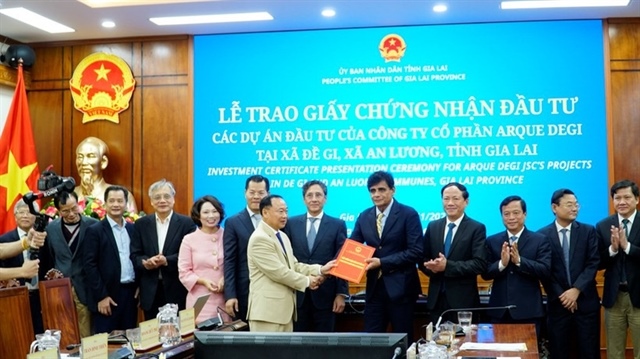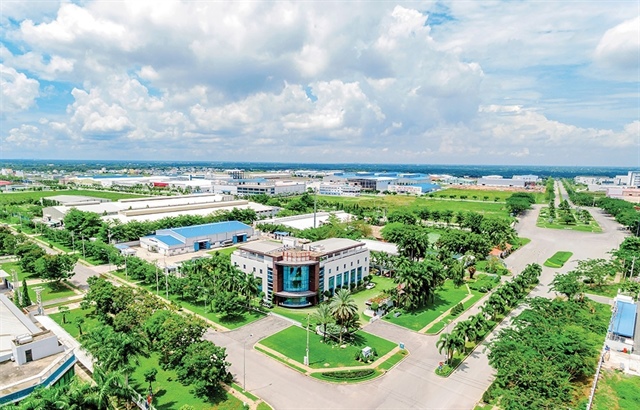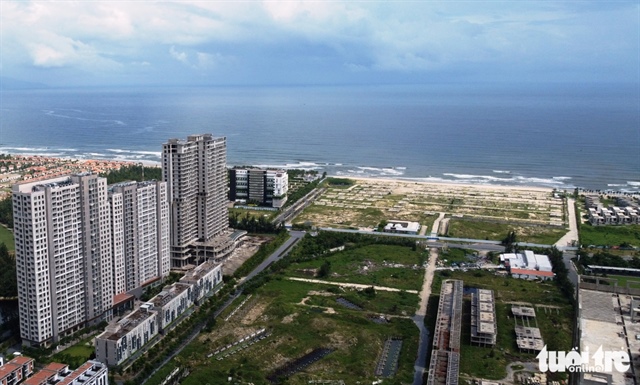Real estate transactions to increase in Q4
Real estate transactions to increase in Q4
The domestic real estate market in the fourth quarter of this year is forecast to see the strongest increase in transactions in the year, higher than the transaction volume in the same period of 2017.

Nguyen Van Dinh, deputy chairman of the Viet Nam Real Estate Brokerage Association, made the prediction at the association’s press conference on reviewing real estate transactions in the domestic market in the third quarter of this year in Ha Noi on October 11.
In the last quarter of this year, the domestic real estate market would receive many new products from real estate development projects nationwide. Prices of property products would increase slightly by 0.5 – 1 per cent compared to the third quarter, said Dinh.
In the fourth quarter, the market will continue to see diversification in the kinds of property products on offer, according to Dinh. Demand for housing and investment in the real estate sector will continue to see growth because the economy is expected to remain stable.
Meanwhile, foreign direct investment (FDI) may continue to flow to Viet Nam as investors are tending to withdraw from the Chinese market due to concerns over the US-China trade war, according to the association.
The last quarter also marks the moment when Viet Nam will receive the largest amount of remittance for the year in comparison with other channels such as securities, gold and foreign currencies. The real estate sector is considered a potential channel to attract this investment.
According to the association, two major markets of Ha Noi and HCM City saw sustainable development in the third quarter of this year. Real estate projects received large investment and offered many products on the local market. The two cities marketed over 20,000 new products with reasonable structure in those product sectors.
Prices of properties in the two cities were stable compared to the second quarter while about 13,000 products were traded successfully, bringing the absorption rate to 63.5 per cent. A large number of buyers had real demand for property products, showing no sign of a real estate bubble.
In Ha Noi, affordable condominiums accounted for 54 per cent of total traded apartments while in HCM City, high-end products dominated the market with 40.5 per cent, followed by mid-end with 36.5 per cent.
The association reported that other localities nationwide also experienced development in the real estate market. However, the third quarter saw reductions in supply and demand on the resort property market.
Therefore, the association recommended that it was time to suspend the development of new resort property projects. The existing resort projects should focus on completing construction to begin operations, meeting initial targets of the projects and building confidence for investors.
Property price index
According to the Savills Property Price Index (SPPI) released on October 11, the residential index in HCM City’s residential market reached the highest level for the last five years at 96, increasing 1 point quarter-on-quarter (QoQ) and 3 points year-on-year (YoY).
Total transaction volume on the southern market surged to approximately 14,400 units, up 6 per cent QoQ and 22 per cent YoY. Absorption reached a five-year high at 56 per cent, up 9 percentage points (ppts) QoQ and 24 ppts YoY. The strong performance was due to increasing sales from new Grade B and C projects. Grade B transactions had the highest growth of 31 per cent YoY.
Until 2020, Grade C is expected to account for 62 per cent of future supply. With high demand, developers will deliver Grade C units in western and outlying districts.
Meanwhile, in Q2/2018, The Residential Index of the Ha Noi property market increased by less than 1 point (pt) quarter-on-quarter (QoQ) and decreased 1 pt year-on-year (YoY) to 104.81. The average selling price was US$1,196/m2, up 1 per cent QoQ.
The average absorption rate was 27 per cent with sales reaching approximately 7,500 units, up 31 per cent QoQ and 11 per cent YoY. Grade B dominated with a 59 per cent share or 27 per cent absorption, whilst Grade C performed well with 38 per cent of sales. Grade A transactions decreased due to limited available stock and high asking prices.





















